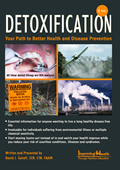FIVE DEAD, 450 ILL FROM CONTAMINATED PEANUT BUTTER
By
NWV News writer Jim Kouri
Posted 1:00 AM Eastern
January 20, 2009
© NewsWithViews.com
Federal
health officials said Friday that more than 450 illnesses and five deaths
have
been linked to a salmonella outbreak that's believed to have been
caused by peanut butter and peanut paste.
The Food and Drug Administration notified over 30 companies that bought
peanut butter or peanut paste from a Georgia plant owned by Peanut Corporation
of America in order to test their products, said representative during
a press conference attended by NewsWithViews.com.
Companies around the country are also being warned that they should temporarily cease sales, said the consumer representatives, who took part in a conference call with federal officials Friday.
The concern about peanut paste is significant because it can be used in dozens of products, from baked goods to cooking sauces. At first, the state and federal investigation focused on bulk containers of peanut butter sold to institutions like nursing homes, and not found on supermarket shelves.
But further investigation revealed that the danger spread to grocery stores and supermarkets.
For example, the Kellogg Company, which gets some peanut paste from a suspected facility, asked stores late Wednesday to stop selling some of its Keebler and Austin peanut butter sandwich crackers. The company said it hasn't received any reports of illnesses, however.
Peanut Corp. said it is working with federal authorities.
Food Protection Plan Receives Low Priority
Conservative US lawmakers are concerned over the nation's food safety receiving such a low priority. The Food and Drug Administration is responsible for ensuring the safety of roughly 80 percent of the US food supply, including $417 billion worth of domestic food and $49 billion in imported food annually, yet experts say they aren't confident about food protection.
Changing demographics and consumption patterns along with an increase in imports have presented challenges to FDA. At the same time, recent outbreaks, such as E. coli from spinach and Salmonella from tomatoes, have undermined consumer confidence in the safety of the food supply.
In November 2007, FDA released its Food Protection Plan, which articulates a framework for improving food safety oversight. In January 2008, General Accounting Office expressed concerns about FDA's capacity to implement the Food Protection Plan and noted that more specific information about the strategies and resources needed to implement the plan would facilitate congressional oversight.
"There are those who believe lawmakers should be more concerned over protecting Americans from tainted or dangerous food supplies than trying to takeover the entire health care industry," says political strategist Michael Baker.
"In a time when airline passengers are practically strip-searched at airports, food products are given scant inspection," warns Baker.
To address these issues, GAO reviewed FDA documents, such as FDA's operations plan, and FDA data related to the plan. GAO also interviewed FDA officials regarding the progress made. In addition, GAO analyzed FDA data on domestic and foreign food firm inspections. GAO also analyzed the status of past recommendations.
Since FDA's Food Protection Plan was first released in November 2007, FDA has added few details on the resources and strategies required to implement the plan. FDA plans to spend about $90 million over fiscal years 2008 and 2009 to implement several key actions, such as identifying food vulnerabilities and risk.
From the information GAO has obtained on the Food Protection Plan, however, it is unclear what FDA's overall resource need is for implementing the plan, which could be significant. For example, based on FDA estimates, if FDA were to inspect each of the approximately 65,500 domestic food firms regulated by FDA once, the total cost would be approximately $524 million.
In addition, timelines for implementing the various strategies in the plan are also unclear, although a senior level FDA official estimated that the overall plan will take 5 years to complete. Importantly, GAO has noted that public reporting is the means through which the federal government communicates the results of its work to the Congress and the American people.
FDA officials told GAO that they had prepared a draft report on progress made in implementing the Food Protection Plan, but as of June 4, 2008, FDA told GAO that the Department of Health and Human Services had not cleared the report for release.
"The Food Protection Plan identifies the need to focus safety inspections based on risk, which is particularly important as the numbers of food firms have increased while inspections have decreased," said one FDA official.
For example, between 2001 and 2007, the number of domestic firms under FDA's jurisdiction increased from about 51,000 to more than 65,500, while the number of firms inspected declined slightly, from 14,721 to 14,566. Thus, conducting safety inspections based on risk has the potential to be an efficient and effective approach for FDA to target scarce resources based on relative vulnerability and risk. FDA has implemented few of GAO's past recommendations to leverage its resources and improve food safety oversight. Since 2004, GAO has made a total of 34 food safety related recommendations to FDA, and as of May 2008, FDA has implemented 7 of these recommendations.
For the remaining recommendations, FDA has not fully implemented them, however, in some cases, FDA has taken some steps.
However, the planned activities in the Food Protection Plan could help address several of the recommendations that FDA has not implemented. For example, in January 2004, GAO recommended that FDA make it a priority to establish equivalence agreements with other countries. GAO analysts claim they found that such agreements would shift some of FDA's oversight burden to foreign governments.
|
Subscribe to the NewsWithViews Daily News Alerts! |
As of May 2008, FDA has not yet established equivalence agreements with any foreign countries. The Food Protection Plan requests that Congress allow the agency to enter into agreements with exporting countries to certify that foreign producers' shipments of designated high-risk products comply with FDA standards.













